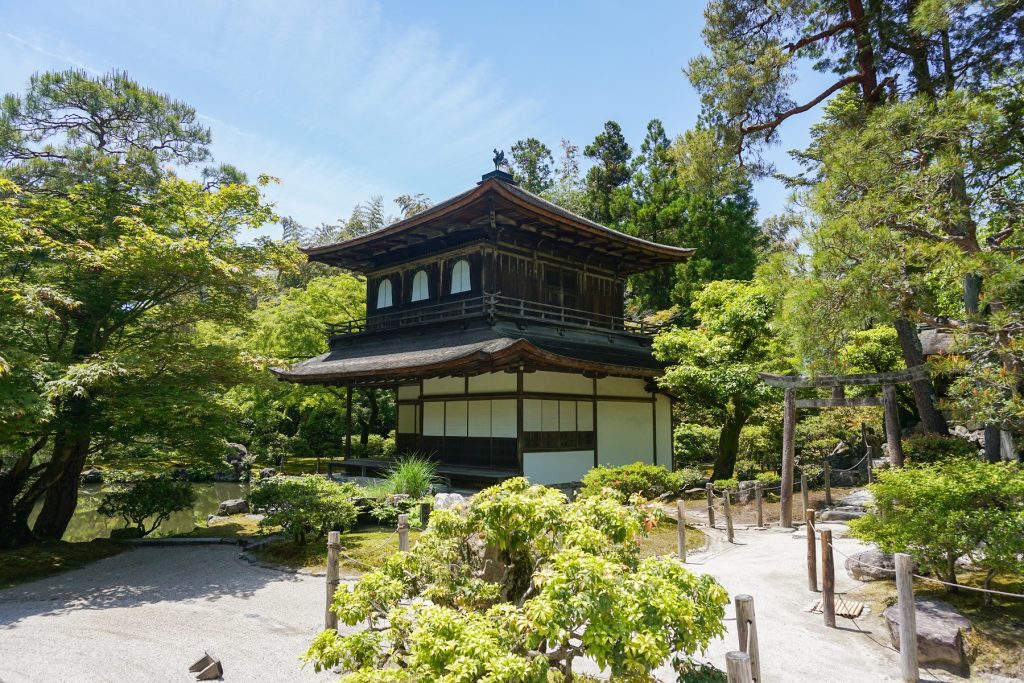Japanese rock gardens, also known as karesansui or “dry landscape gardens,” are a distinctive feature of traditional Japanese architecture and landscaping. These gardens are designed to promote contemplation and meditation and have been an integral part of Japanese culture for centuries.

The History of Japanese Zen Rock Gardens
The origins of Zen rock gardens can be traced back to the 12th century, during the Kamakura period in Japan. The first Zen rock garden was created by a Buddhist monk named Muso Soseki, who wanted to create a space that would promote meditation and introspection. He designed the garden to be a miniature representation of nature, with rocks representing mountains and sand representing water.
Over time, Zen rock gardens became more popular in Japan, and many temples and other public places began to incorporate them into their designs. Zen rock gardens became an essential part of Japanese architecture and landscaping and spread to other parts of the world.
The Design Elements of Japanese Zen Rock Gardens
Zen rock gardens typically have a minimalist design and feature few elements. The gardens are usually small and are designed to be viewed from a specific angle, such as from a porch or a meditation room. The garden’s design is meant to create a sense of stillness and simplicity, allowing visitors to focus on their thoughts and emotions.
The most essential design elements of a Zen rock garden are rocks, sand, and gravel. The rocks are carefully selected and arranged in specific patterns, representing mountains, islands, or other natural formations. The sand or gravel is raked into patterns that represent waves or flowing water, creating a sense of movement and harmony.
The Significance of Japanese Zen Rock Gardens
Japanese Zen rock gardens have several significant cultural and philosophical meanings. They are designed to promote a sense of calm and tranquillity and encourage contemplation and introspection. The arrangement of the rocks and the patterns in the sand or gravel are intended to stimulate the imagination and promote a sense of harmony with nature.
Zen rock gardens also reflect the principles of Zen Buddhism, which emphasises the importance of mindfulness and living in the present moment. The garden’s simplicity and lack of ornamentation encourage visitors to focus on the present moment and cultivate a sense of inner peace and stillness.
Moreover, the design elements of the Zen rock gardens reflect Japan’s love for nature and its deep connection to the natural world. The rocks in the garden represent mountains, and the patterns in the sand or gravel represent the flow of water. The garden’s design is intended to create a space that reflects the beauty and harmony of the natural world.
Examples of Famous Zen Rock Gardens in Japan
In addition to the history, design elements, and significance of Japanese Zen rock gardens, there are also several well-known Zen rock gardens throughout Japan that are worth exploring. Here are some examples:
Ryoan-ji Temple Garden – Kyoto: The Ryoan-ji Temple Garden is one of the most famous Zen rock gardens in Japan. It was built during the Muromachi period (1336-1573) and is known for its minimalist design, featuring only 15 rocks arranged in five groups on a bed of white gravel. The garden is considered a masterpiece of Japanese Zen culture and has been designated a UNESCO World Heritage Site.
Daisen-in Garden – Kyoto: Located within the Daitoku-ji temple complex in Kyoto, the Daisen-in Garden is another well-known Zen rock garden. It was designed by the Zen priest and garden designer Soami in the 16th century and features a central pond surrounded by rocks and plants. The garden is renowned for its use of asymmetrical design, which creates a sense of naturalness and spontaneity.
Ginkaku-ji Temple Garden – Kyoto: Also known as the Silver Pavilion, the Ginkaku-ji Temple Garden is a Zen rock garden that was built in the late 15th century. The garden features a large sand mound known as the “Moon Viewing Platform,” which is surrounded by moss and rocks. The garden’s design is intended to evoke a sense of calmness and serenity, and it is a popular spot for visitors to Kyoto.
These are just a few examples of the many Zen rock gardens that can be found throughout Japan. Each garden has its unique design elements and history, but they all share a common goal of promoting mindfulness, contemplation, and inner peace. Whether you are visiting Japan or simply looking to create a peaceful space in your own home, a Zen rock garden can be a powerful tool for promoting calmness and tranquillity in your life.










